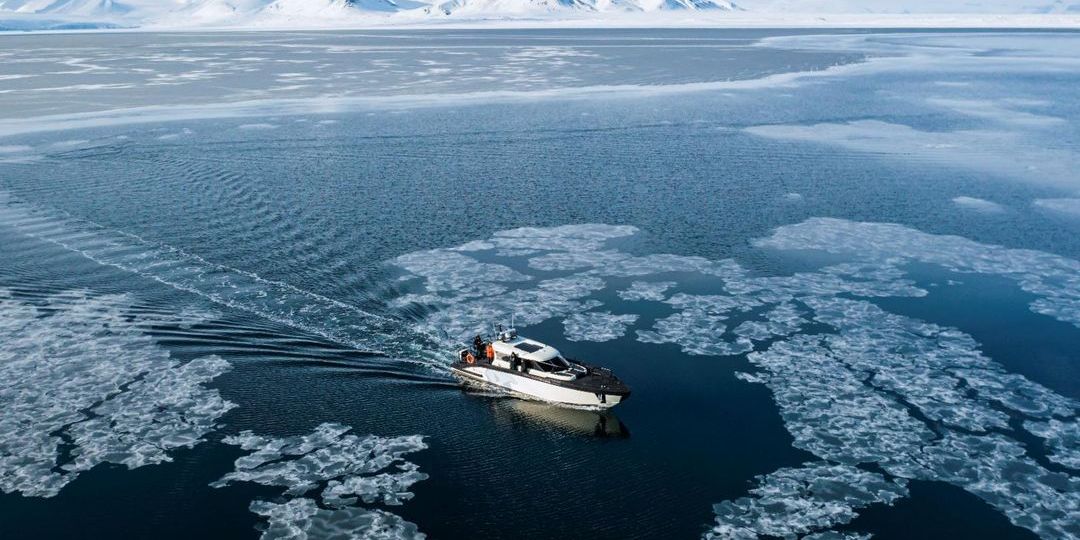
Social media posts are sharing a century-old report on the warming of the Arctic Ocean to question the science of climate change. But the posts are misleading; the original article did not predict imminent threats to coastal cities from sea-level rise, and experts say observations from 1922 do not disprove the effects of human-caused global warming on polar ecosystems.
“Within a few years it is predicted that due to the ice melt the sea will rise and make most coast cities uninhabitable,” says text in a June 1, 2022 Facebook post.
The post goes on to claim the text stems from an Arctic exploration report that was “reported and published in the Washington Post” in 1922.
 Screenshot of a Facebook post taken July 15, 2022
Screenshot of a Facebook post taken July 15, 2022The century-old article has been circulating on Facebook for years, often accompanying posts that dismiss scientific assessments and calls to action. Parts of the report have also been published on websites that have previously spread climate misinformation, including Watts Up with That?
The report is authentic; it describes the warming of the ocean, icebergs “growing scarcer” and glaciers that “have entirely disappeared.” But the projections about sea levels rising and uninhabitable coasts, quoted in the social media posts, did not appear in the original version.
“So we have a situation where something real and actually interesting is found in the archives, it gets misrepresented as a ‘gotcha’ talking point, but someone thinks it can be made ‘better’ and so adds a fake last line to sex it up,” wrote Gavin Schmidt, director of the NASA Goddard Institute for Space Studies, in a 2014 blog post responding to the misinformation.
‘Drastic’ change in sea ice
A search of The Washington Post’s archives showed the report cited in the social media posts was published November 2, 1922. The clip is attributed to the Associated Press and cites observations from Norwegian explorers during an expedition.
The report does not undermine the scientific consensus on human-caused global warming.
 A screenshot shows a report about an Arctic exploration, published November 2, 1922 in The Washington Post
A screenshot shows a report about an Arctic exploration, published November 2, 1922 in The Washington PostTemperatures are increasing in every region on Earth, according to the latest Intergovernmental Panel on Climate Change (IPCC) report, which is put together by more than 700 scientists from 90 different countries. Warming in the Arctic is more than twice as high as the global average, scientists noted.
Kate Moran, president of the University of Victoria’s Ocean Networks Canada, an organization that monitors Arctic data, told AFP that ice variations reported 100 years ago are not comparable to those observed today.
She said data from 1922 “shows heavy, concentrated sea ice (multi-year),” which is “drastically different from today where there is very little multi-year ice and extent.”
“We are in a climate emergency and the Arctic is warming faster and greater than almost any place on the planet,” Moran said, pointing to observable sea ice loss and sea-level rise, glacial ice loss and extreme heat in the ocean. “We have not seen this drastic of a change in perennial sea ice for over 15 million years.”
In 1922, Moran said, these impacts from climate change “were not yet observable, although the greenhouse effect and its potential had been known since the late 1800s.”
Report reflects weather, technology
Asked about the observations in the 1922 report, Jayantha Obeysekera, director of the Sea Level Solutions Center at Florida International University, told AFP: “It seems like what was observed at that time was a localized phenomenon and not Arctic-wide.”
Sridhar Anandakrishnan, a glaciologist and professor of geosciences at The Pennsylvania State University, also said the observations in the report were “not unheard of, or unexpected.”
“Warm years in the past did happen — prior to the enormous effects of human-caused CO2 increase and warming,” Anandakrishnan said. “They were part of the natural variability of the climate system that we are all familiar with.”
 Change in the Arctic sea ice area in October, compared to the average area in October from 1981 to 2010
Change in the Arctic sea ice area in October, compared to the average area in October from 1981 to 2010Experts also told AFP that explorers who reported on Arctic conditions 100 years ago would have had access to far inferior technology.
“In 1922, measuring and monitoring the seas and oceans was done by vessels that were actually there — and on land by people traveling there,” Anandakrishnan said. “Their view of the world was accurate as far as it went but didn’t have the scope of global access we have today from satellite imagery, buoys, floats, aircraft, long-term weather stations, etc. In addition, we now have much better modeling and projection capability.”
Claire Parkinson, a senior climate change scientist at the NASA Goddard Space Flight Center agreed. “Because satellites now allow us to monitor the full expanse of the sea ice cover every day, the statistics are overwhelmingly more complete now than would have been feasible in 1922,” she said.
Past observations do not “change the fact that the warming we’re experiencing now could lead to troublesome problems, for instance through sea-level rise,” she said.
AFP has previously fact-checked other claims that manipulate or misrepresent data about warming in the Arctic, here, here and here.
